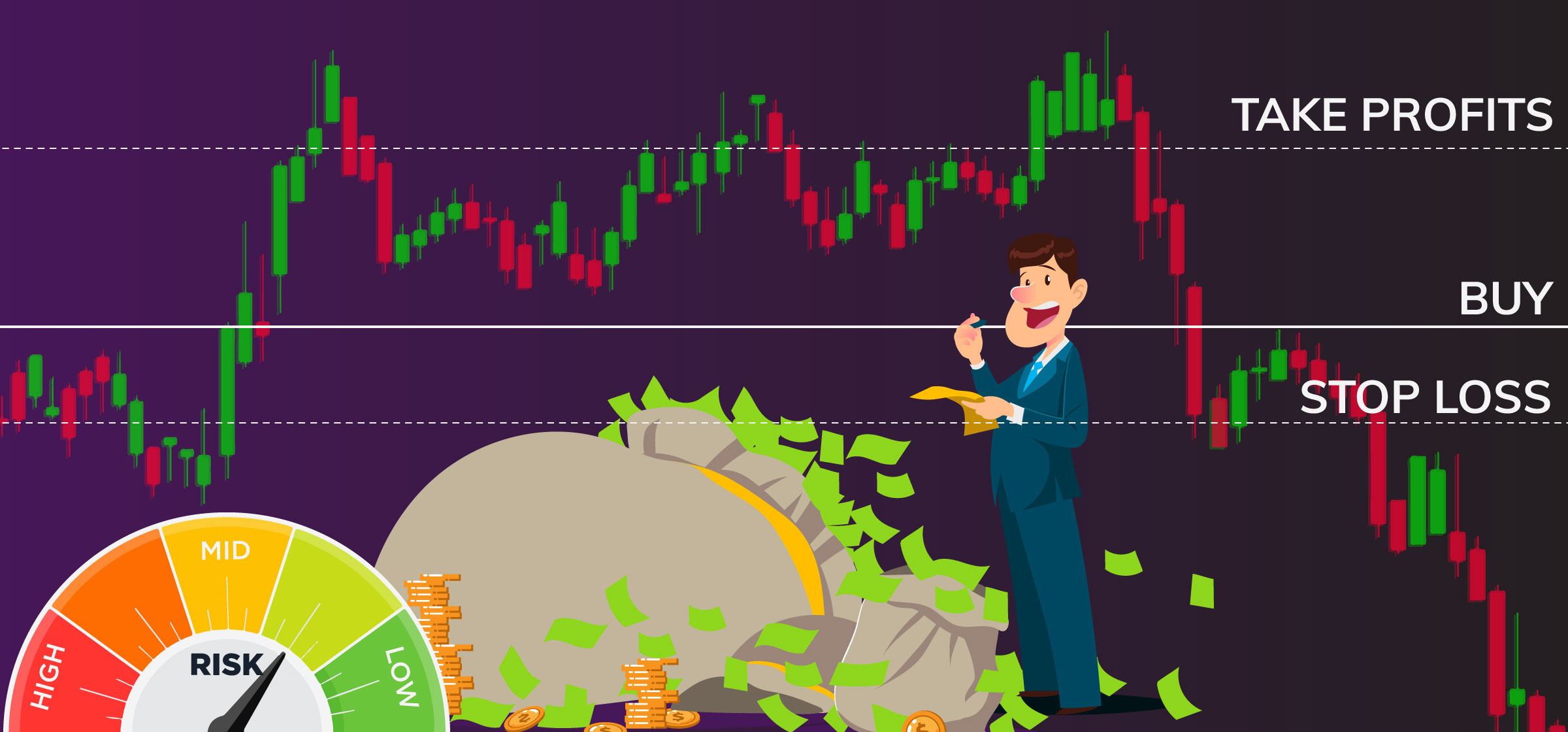Educational
December 5, 2019
Crypto Traders’ Guide: Position Sizing Strategies
Jitender TokasChief Business Officer
Calling the direction of the market correctly is not a sufficient condition for profitable trading. How a trader allocates his trading capital across his trades makes a big difference to the overall returns on his portfolio. Let’s understand this with an example.
John and Jack are two crypto traders having $50000 each in trading capital. Both are bullish on Bitcoin and are bearish on Ether. John longs 5 BTC at $7000 and shorts 100 ETH at $150. So, 80% of John’s trading capital is used for the long BTC trade, the remaining 20% for the short ETH trade.
Jack, on the other hand, decides to look at different parameters such as his risk appetite, the volatility of both these instruments and then divides his trades proportionately. Jack longs 3.5 BTC at $7000 and shorts 166 ETH at $150, using 50% of this capital for each trade.
On closing their trades this is what their positions looked likes,
|
Long |
Qty |
Price |
P/L |
Short |
Qty |
Price |
P/L |
Total P/L |
| John |
BTC |
5 |
$7050 |
$250 |
ETH |
100 |
80 |
$8000 |
$8250 |
| Jack |
BTC |
3.5 |
$7050 |
$168.5 |
ETH |
166 |
80 |
$13280 |
$13448.5 |
John made 16.5% on his capital while Jack made 26.8% on his capital. Despite entering the same trades, there is a 10% difference in the gains made by the two traders. This difference is the result of different position sizing approaches adopted by John and Jack.
This example underscores the importance of optimal position sizing. It is quite common for traders to focus on predicting the direction of the market and not paying sufficient attention to position sizing and overall performance of their portfolio. Such behaviour can, in the long-run, significantly hit a trader’s performance.
In this article, we explain what is position sizing and provide details of some key position sizing strategies.
What is Position Sizing?
Position sizing helps you to identify what percentage of your capital can be allocated to a single trade. It essentially helps you to calculate how many units of security you can purchase to stay within the risk limits while trying to maximize the returns.
Why is Position Sizing needed?
Position sizing is an important tool in the arsenal of every successful trader. Without optimal position sizing, a trader may end up allocating too little capital to winning trades and too much capital to losing trades. Furthermore, appropriate position sizing also helps control the risk of the portfolio and safeguard many novice traders from hefty losses.
Consequences of improper position sizing
Let’s say a crypto trades starts with a 10 BTC trading capital. If he loses 1% of his trading capital, he needs a 1% return on his remaining capital to get back to 10 BTC. After a 5% loss, the return required to breakeven is 5.3%. After a 50% loss, a whopping 100% return is required to bring the trading capital back to the starting level.
| Loss |
Capital |
Return efforts |
| 5% |
$9500 |
5.30% |
| 10% |
$9000 |
11.10% |
| 25% |
$7500 |
33% |
| 50% |
$5000 |
100% |
It is evident that % gains required to make up for a loss are much higher than the % loss as the loss increases. This means that recovering from a bigger loss is disproportionately harder recovering from a smaller loss. Therefore, it is vital to not put too much capital at risk on a single trade and size each trade appropriately.
Position Sizing Strategies
We are enumerating several position sizing strategies. You should adopt the strategy that suits your trading style and approach the best.
This is one of the most basic position sizing strategy used by traders mainly due to its simplicity. The simplicity could be looked at both as a pro and con. In this strategy, the trader decides a fixed amount he wishes to invest in each trade. For instance, if your portfolio value is $100,000 and you wish to enter in 5 contracts, you would assign $20,000 to each contract. It’s as simple as that.
The drawback to this approach is that many times a contract is not worth exactly $20,000. So sometimes you either enter a trade worth $18,000 or $25,000. Another outlook is that it does not take into consideration the risks and volatility involved in each contract. To give an example, hypothetically, BTC Futures might have a 15% annualized volatility while ETH Futures might have a 35% annualized volatility. This means that positions of the same size in BTC futures and ETH futures actually expose you to very different risks.
- Volatility based Position Sizing
In this position sizing strategy, capital allocated to trade is dependent on the volatility of the asset trading. Higher the volatility of an asset, higher is the risk that comes with it. So, more capital is assigned to low volatility assets because they expose you to lower risk. Conversely, less capital is assigned to a more volatile asset as they are high risk. Volatility based position sizing helps counter the drawbacks of allocated a Fixed Amount per Trade.
To combat the drawback mentioned in Fixed Amount per Trade strategy, this is another method traders adopt. This method takes 3 variables into considerations:
- Stop Loss – The % where you place your stop-loss. To read more about where to place your stop loss, read our article here.
- Risk per Trade – How much % of your capital you want to risk each trade
- Maximum Risk – The maximum % of your capital you will lose in case all trades work against you
In this technique, you risk a small % of your capital in every dollar. Instead of concentrating on the dollar value of the trade, the risk is in proportion to the capital. Most traders follow a 2% or 5% risk strategy depending on their appetite. Using a $10,000 and using a 2% risk, a trader risks on $200 per trade. The great idea about this strategy is, as the capital increases the % remains the same, but the capital used increases. Similarly, as the capital decreases, you can still risk 2% but the dollar value would be smaller.

Average Downing is a trading strategy that requires some back-testing data to be done. However, once the strategy is in place, it is quite an effective and easy to use strategy. Average downing essentially means, buying an additional number of shares when the price of the asset is moving downwards. This helps to reduce the average cost of the trade.
For instance, you have acquired 0.05BTC at $6000.Two weeks hence, the BTC price has gone down to $5000 and your back-testing data reveals this is just a correction. You then decide to accumulate 0.05BTC more at $5000.Thus, you have averaged down your price from $6000 to $5500 through this strategy. However, one needs to be aware of whether the price of the asset is just in a correction phase or its freefalling. Accumulating additional quantity of a freefalling asset can be remorseful
This method is quite useful for intraday traders. The percentage margin strategy requires you to position size based on the margins you have decided for yourself. This strategy is, in essence, fixes a certain % of your capital as margin for each trade. For instance, a trader has decided to block only 15% capital as margin in each trade. On a fund of $10,000, this means $1500 per trade.
Suppose a trader decides to go long a contract of BTC Futures, but due to the contract size and price, the capital blocked is $2000. Given this situation, the trader will not enter the contract, sticking to his position sizing rules. It is not wise for a trader to just increase the size of a margin to enter a trade. On the other hand, if a trader wishes to enter an Etereum Futures contract and the capital requirement is $600, the trader can now double his trade value as it still fits in his margin requirement. The drawback to percentage margin is, it does not take volatility into consideration which could vary for each contract.
Final Thoughts
As a trader, position sizing is imperative. It might seem like an extensive task, but once you get the hang of it, it is surely going to bear fruits. We’re just going to leave you with some words to ponder over,
“I have two basic rules about winning in trading as well as in life.
1. If you don’t bet, you can’t win
2. If you lose all your chips, you can’t bet”
-Larry Hite
FuturesTrade Futures & Perpetual Swaps on 25+ crypto assets, with up to 100x leverage
OptionsTrade call, put or MOVE options on BTC, ETH, BNB and LINK
Interest Rate SwapsInterest rate derivatives that enable swap of fixed-floating rates
Mock Trading PlatformLearn Crypto Derivatives trading without risking real capital
Research & AnalyticsExclusive data, charts and analytics to help you trade smarter













